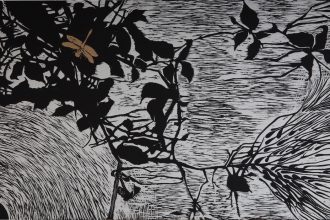Film Critic Marcus Nicholls suggests that we take a look at film, and Gus van Sant’s Last Days in particular, through Baudelaire’s view of art criticism.
By Marcus Nicholls
Film can be seen to conflate facets from older art forms into a dynamic composite; it borrows elements from theatre, music, literature, painting. In flinging wide the doors of its ancestry, we as critics can engage with the venerated theorists of pre-film eras, who in their dissecting of the parent arts can perhaps show us film in fresh perspectives.
Charles Baudelaire, creator of some of the 19th century’s best poetry, was also an influential critic and essayist. His Salons were widely read and often controversial pieces of art-criticism, discussing the paintings currently on display in Parisian galleries. It is my opinion that these critical works are transferable to the analysis of film, illuminating in their engagements with visual effect and artistic technique.
Baudelaire’s short piece on colour in the Salon of 1846 offers, I believe, many ideas which are rewarding when applied to the cinematic medium. He glimpses the structures of the artists who can translate nature’s “complex hymns†of changeable hues, identifying the loci of effects as harmony, melody and counterpoint. In film we find, of course, directors with varying talents, and so varying levels of colouring technique. We see gleeful and hectic overindulgence in the hands of Argento and Corman, unsubtle but often enjoyable, juxtaposed with those artists working in the chiaroscuro of the silent era, a draughtsmanship that sketches in deepening shadows, manipulating light as architects do. We can also find the master colourists, such as Kubrick and Tarkovsky, whose instinct is unrivalled; their eyes are the magnifying glasses to evoke nature and experience in frames of stained glass celluloid.
Baudelaire posits that colours “exist only in relation to each otherâ€, usually in dyads of warm and cold, plus the contrasts between. He enthuses that falsehoods are constantly necessary, pre-empting the decadent ideas of beautiful artifice over banal reality. Here we can take that difference between the directors who shoot as close to reality as possible; which for me, at least, is uninspiring; and those who interpret the world and paint it in colours able to evoke more than a mere copy of the visual. They can use colour as symbol and as affective emotional agent, a participant in the text as much as narrative and character.
Gus Van Sant is a director whose use of colour is very adept. Subtle and restrained, he embeds colours within his films like glinting cabochons in a solid oak crown. His directorial style is characterised by its naturalism, with an organic movement to the frames, and languorous, twisting shots that last an age. He follows his characters in ponderous omniscience, often for minutes at a time as they do very little. Within a grounded and paradoxically real style such as this, colours cannot be grandiose or garish; his choices chime perfectly with the moods of his floating, witnessing camera. His film Last Days exemplifies particularly well how confidently he handles colour within the frame, where it is unobtrusive yet by turns profound and intoxicating. Like Baudelaire says, colours create atmosphere and mood.
Whilst harmony (the echoing resonances of different colours combining in fugue) is the basis of Baudelaire’s theory, it is melody that can be most interesting when applied to film. The French poet describes melody as a “unity of colour†a colour scheme as a whole, all the harmonies building a total effect. He identifies melody as the stamp that imprints “indelible memory†on the viewer, the unforgettable retention of the overall colour composition of an image. Baudelaire proposes to: “…look at (the image) from far enough away to make it impossible for us to see what it is about or appreciate its lines. If it is melodious, it already has a meaning, and has already taken a place in our collection of memories.â€
Van Sant’s films work particularly well for this, as they move with such a slow drift, changing very little over the course of a lingering shot. I have always found that when I conjure any kind of thought relating to Last Days, my mind’s eye is immediately filled with the kinetic image of green swathes of dappled background, teeming with movement and light, and a figure before these in soiled white, darkened blonde and a vivid central nucleus of deep arterial red. The colour image, shorn of detail is what remains indelibly: the melody of that opening sequence is perfectly judged to immediately arrest the imagination. The atmosphere is rooted in the dissonances and harmonies between hues, framed within the long, savouring takes.




